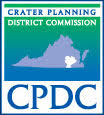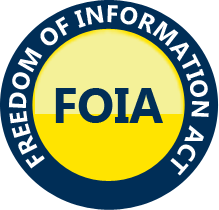Sussex County During the American Civil War
Sussex County was the scene of much military activity during the Civil War. Its local cavalry unit, the "Sussex Light Dragoons" borrowed their name from a preceding Revolutionary unit in the county. Its members became a part of the Thirteenth Virginia Cavalry.
 In May of 1864, Jarratt’s Depot was destroyed by Union cavalryman, August Kautz, who demolished all buildings there except the tavern of Humphrey Grigg, which still survives.
In May of 1864, Jarratt’s Depot was destroyed by Union cavalryman, August Kautz, who demolished all buildings there except the tavern of Humphrey Grigg, which still survives.
General John R. Chambliss, Jr., helped save the day for the Confederates at Sappony Church in June 1864, where his great-grandfather was a pastor and where he and General Wade Hampton thwarted 20,000 federal soldiers in their efforts to destroy the railroad. But destroying the railroad, which was Richmond's lifeline, was the persistent quest of the Union army, and repeated skirmishes and attacks continued in Sussex during the latter years of the war.
It was en route to Hicksford to destroy the railroad bridge there in December 1864 that Union soldiers destroyed some of the records at Sussex Courthouse and one of them carried off the county seal, only to return it in 1901.
All but two record books of the Circuit Court, which met then in sessions of only twice a year, were destroyed, and one of those books was mutilated with a sword and thrown out on the Courthouse green. George W. Prince, the county Court Clerk, foreseeing the imminent danger, had carefully hidden most of the county's most vital records elsewhere.
A hospital for Union soldiers was established in one of the dwellings adjoining the Courthouse green. Union General Governeur Warren, returning from his successful raid on the railroad at Hicksford, made his headquarters at "Invermay," the home of Dr. William Briggs, just a mile south of the courthouse. His statue overlooks the battlefield at Gettysburg, where he made a successful repulsion of Confederate troops.
Confederate General Wade Hampton had boosted Southern morale in September 1864 with his slick swiping of 2,000 head of cattle herded on the James River in Prince George County and routing them through the backwoods of Sussex County.
Beefsteak Road commemorates part of that pathway. In the wake of Union military activity in Sussex County, over fifty black men escaped from their plantations and enlisted as soldiers in the United States Colored Troops.
Likewise during these latter days other men in slavery enlisted to save the embattled Confederacy. While white citizens of the county were virtually unanimous in their devotion to the Confederate cause, it is clear that the black citizens were very much divided in loyalties.
A good many local citizens suffered in the winter of 1864, when Union troops destroyed many dwellings in the Courthouse area, including slave quarters, and forced natives into a freezing snowfall, a retaliation after finding the corpses of Union soldiers who had been killed and mutilated by Confederate guerrillas.
Sussex County During Reconstruction
The Reconstruction brought sweeping changes to the political arena in Sussex. A new constitution was required for Virginia's return to the Union, and in 1870, public schools were mandated, along with a board of supervisors and a single county court judge to replace the old magistrates of the antebellum county court, who had been the leaders of the county since colonial times.

This caused the old courthouse to be extensively remodeled into upper and lower compartments. Also introduced was the secret ballot. During antebellum times, voters publicly professed their choices as they were canvassed (and many candidates for office had politely voted for their opponents).
The electorate was drastically changed momentarily from just white men to a majority of black men, due to the disenfranchisement of virtually all men who had supported the Confederacy.
William N. Stevens (1850-1889), who had moved to the West Hope vicinity of the county from Petersburg, was the first black official of Sussex County. He was elected to serve in the Virginia House of Delegates from Sussex in 1869, and in 1881, until he accepted a federal job in 1883. He was leagued with the Republican party under the leader of former Confederate general, William Mahone. The Republican party and significant black political involvement in the county lasted until around 1900. A new state constitution in 1902, with its imposition of a poll tax for voting.
Accompanying the Reconstruction was the establishment of numerous black churches. First Baptist Church at Little Mill was so called became it was indeed "the first regular Baptist Colored Church in Sussex County." Its land was deeded in 1868 for one dollar and "for the cause of religion" by Thomas A. Harrison. Frederick Knox, one of his former slaves, along with son Africa Knox, were among the first trustees.
In 1872, Wilbourne Baptist Church received its deed from Madison Wilborne, a black carpenter who had been born free during slavery times. (His nephew, Madison Lowry (1851-19131), ran for a seat in the Virginia House of Delegates from Sussex in 1877.)
In 1878, New Hope Baptist near the Courthouse acquired land for its church.
Hunting Quarter Baptist appears to have been formed about 1881, while Little Mount Baptist followed in 1882.
The growth of towns in the county contributed to an increasing number of both black and white churches in the county.
Back to Sussex History Sussex in the American Revolution
Source: A Synopsis Of The History Of Sussex County; Gary Williams, Sussex County Clerk of Circuit Court











 Made in the U.S.A.
Made in the U.S.A.